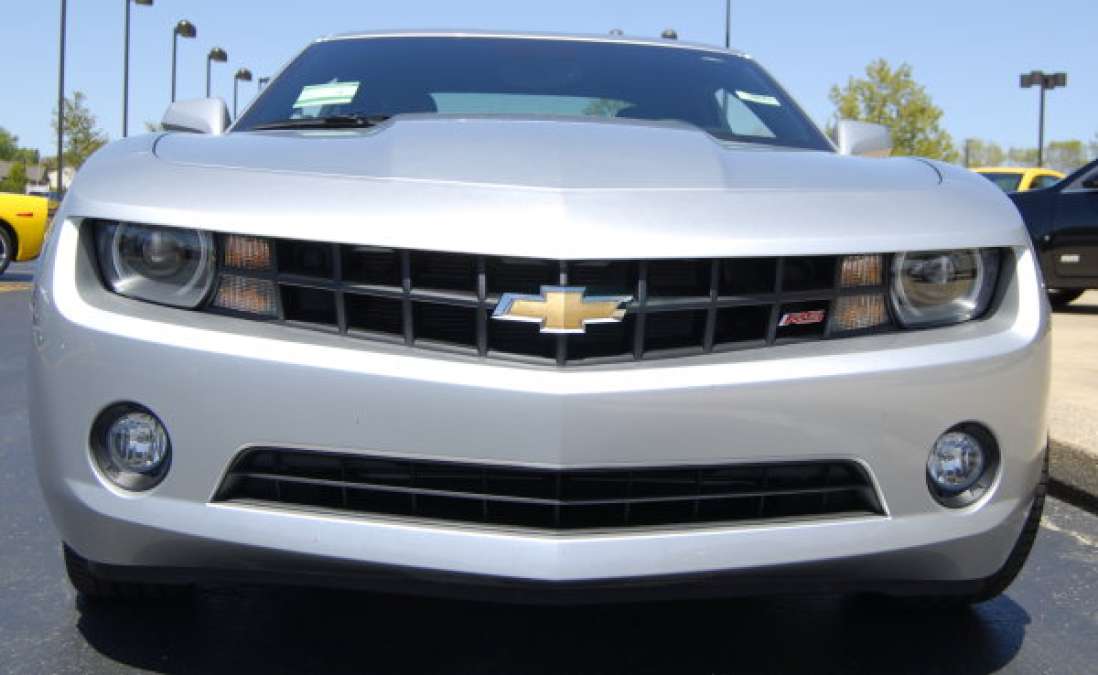The 2016 Chevrolet Camaro SS will most likely be powered by the same LT1 that powers the current 2014 and 2015 Corvette Stingray fastback and convertible. In Corvette duty, the new LT1 packs 455 or 460 horsepower and 460 or 465lb-ft of torque depending on whether or not the performance exhaust package is chosen. Considering that the current Camaro SS shared a V8 engine with the previous “base” Corvette with power ratings which were very similar, we can expect that the 6th generation Camaro in SS form will pack somewhere in the area of 450 horsepower (if not slightly more). That figure will likely be more than enough to give the Camaro SS a healthy advantage over the Mustang GT, but it will also create a huge gap in performance between the base Camaro V6 models and the Camaro SS.
This massive difference in power between the standard V6 and V8 models could hurt the sales numbers of the V6 models – and that is a problem that GM will need to address in order to maintain their stranglehold of the muscle car segment.
For the 2014 model year, the base V6 Camaro is powered by a 3.6L unit that produces 323 horsepower and 278lb-ft of torque while the Camaro SS is powered by a 6.2LV8 that delivers 426 horsepower and 420lb-ft of torque. This gives the Camaro SS an advantage of 103 horsepower and 142lb-ft of torque. Provided that the 2016 Camaro SS features numbers close to my estimates (450hp, 450tq), that would bring about a difference of 127 horsepower and 172lb-ft of torque. At first glance, you might not think that this gap really makes any difference but we should keep in mind that with this new LT1 V8 and this new power output – the next generation Camaro SS will likely get some sort of markup in price.
Considering the base price of the 2014 Camaro SS at $34,350, the new engine will almost certainly creep up over the $35k mark while far less powerful base V6 (1LS) starts more than $10,000 less. On the other hand, the least expensive Ford Mustang GT – which will have at least 420 horsepower – starts in the lower 30s.
Ford Motor Company has bridged the gap in both power and pricing with their new EcoBoost package for the 2015 Mustang, which comes with a slight increase in power over the base V6 with only a modest increase in price. GM insists that they don’t have any sort of turbo 4-cylinder planned to compete with the Mustang EcoBoost so it seems that the best way for Chevrolet to bridge that gap in the Camaro lineup as to eliminate the gap. In other words, when the next generation Camaro arrives, I fully expect to see the new entry level engine receive enough of an increase in power to maintain a relatively similar gap in performance to what we see with the current generation.
Using some basic math, I would expect to see numbers of roughly 350 horsepower and 300lb-ft of torque from the Camaro LS and LT models – which will close the gap compared to the Camaro SS while also giving the V6 Camaros an advantage over both the V6 and EcoBoost versions of the new S550 Mustang.
How much power to you think that the 2016 Chevrolet Camaro V6 model will have when it arrives?






Comments
I do think the base 3.6DI
Permalink
I do think the base 3.6DI will get a power boost but my guess is 335HP and 300pounds torque. I think this will lead to the 3.6DI twin turbo with about 435-445HP called the RS/SS. the base will be about 22k and the RS/SS hitting in at the 30k mark for base price. The LT1 will be 485hp for Vette in 2016 and the SS Camaro about 475hp.